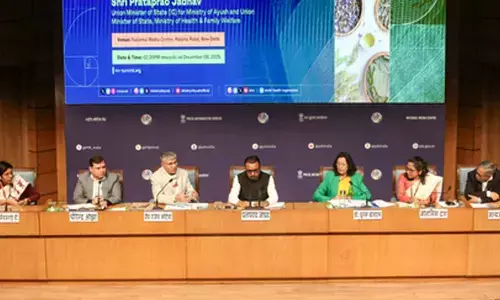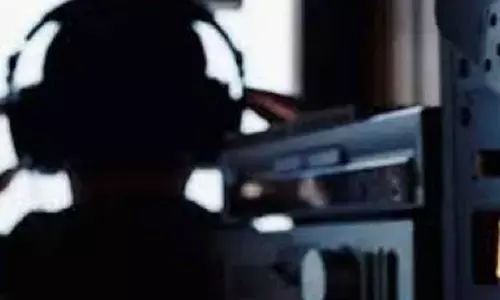Rock art at Avalakkipara A researcher sheds new light

In the expansive half-acre rock art site near Kollur, Udupi district, a diligent research student undertook the task of reevaluating the ancient rock carvings to extract deeper insights and conduct further research.
Udupi: In the expansive half-acre rock art site near Kollur, Udupi district, a diligent research student undertook the task of reevaluating the ancient rock carvings to extract deeper insights and conduct further research.
Dishant Devadiga, a final-year BA student at MSRS College, Shirva, meticulously reexamined the rock art at Avalakkipare. These intricate carvings adorn laterite stone surfaces, featuring depictions of human figures, oxen, and geometric shapes, plus marks enclosed within double circles and cup-shaped impressions scattered across the site.
As these enigmatic artworks and shapes underwent further scrutiny, experts began to surmise that they might hold clues to ancient fertility beliefs. Dr. Sachin K. R. Tiwari, an assistant professor at Banaras Hindu University in Varanasi, Uttar Pradesh, suggested in his research paper that the plus marks within the twin circles might convey insights into concepts of mortality.
Previous researchers who had explored the Avalakkipare rock art site had dated these creations back to approximately 10,000 BCE, placing them within the microlithic age. Their findings were supported by the presence of quartz stones, suggesting that these works were etched into the rock using stone tools.
However, a fresh perspective emerged as these drawings were carefully observed, reexamined, and analyzed by the research student. It was postulated that to create these intricate line drawings on the rocks, artisans might have employed hard metal tools. Dr. Ajith Kumar, the former head of the Department of Archaeology at the University of Kerala, Thiruvananthapuram, and Dr. Ravi Korisettar from the Department of History and Archaeology at Karnataka University, Dharwad, expressed the view that these art forms could be attributed to the megalithic age, dating from 2700 to 800 CE. They suggested that these artworks likely originated through the use of hard metal implements rather than stone tools.
Shruthesh Acharya Moodubelle, a lecturer in the History and Archaeology Department at MSRS College, provided guidance to the research student during the reexamination of the rock art. The forest department, Anti-Naxal Force (Hebri Camp), and students specialising in history and archaeology also lent their valuable support to this endeavour.














